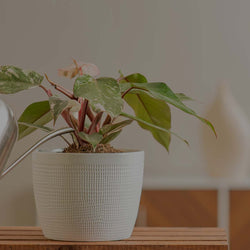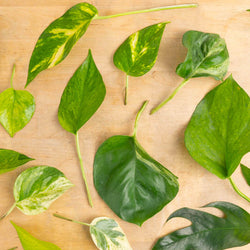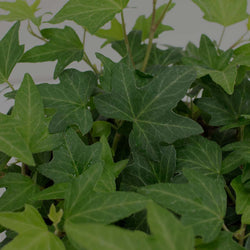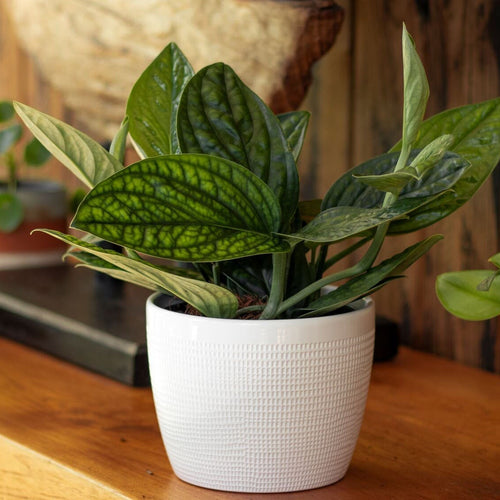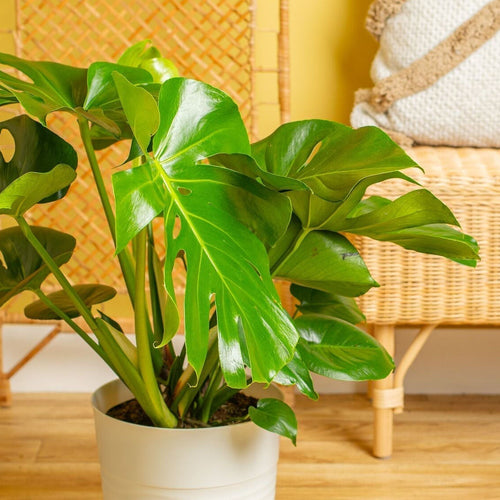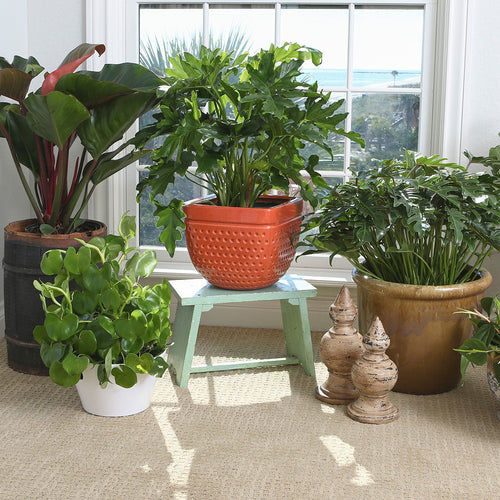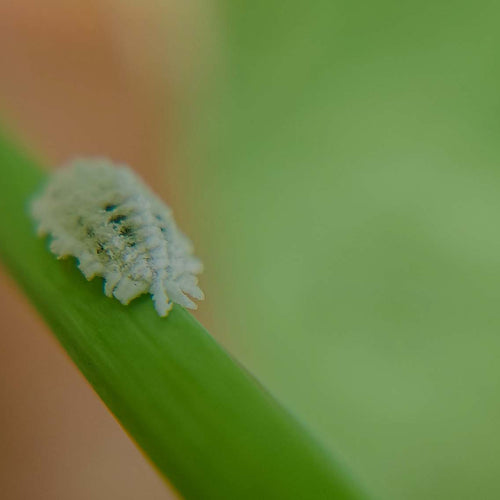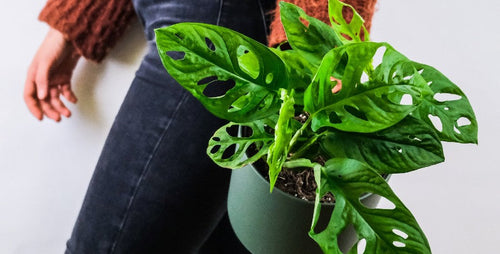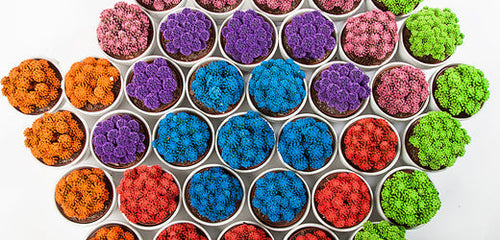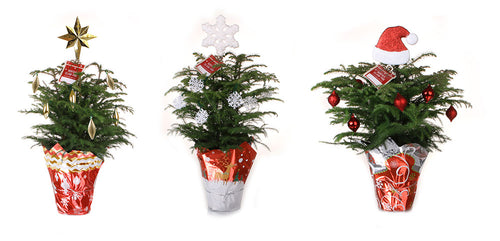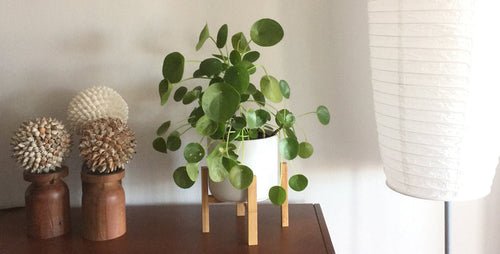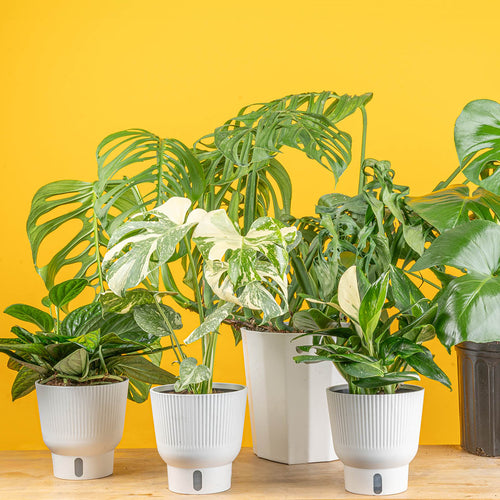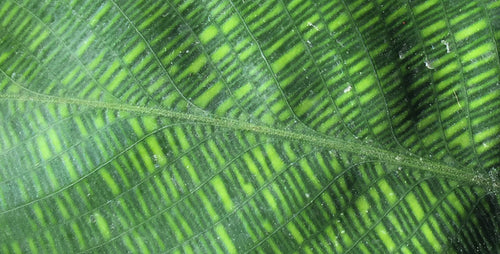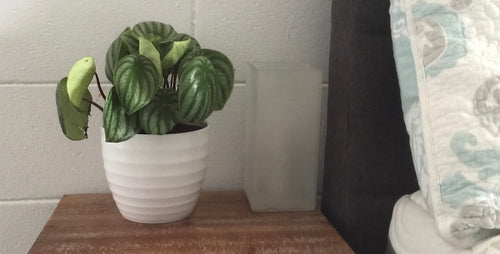Variegated plants are riding the wave of popularity. Variegation in leaves are streaks or stripes of cream, white, yellow, but also other colors as well.
Rare + Unique = Popularity! According to Mike Rimland, Plant Hunter, the popularity of variegated plants are due to two factors: their rarity and their uniqueness. “I think it’s because most are limited in availability and in many cases they (the pattern) are different plant to plant,” he says.

Variegated Plant Differences
Variegated leaves are different from green leaves and need different light requirements. “They have less chlorophyll so they need higher indirect sunlight and longer periods of the same light,” says Mike.
Less chlorophyll for the plant means that variegated varieties grow differently than all-green versions of the same plant. “The green areas of the leaves need to compensate for the non-green areas,” he says.
Read more about choosing the right light for your houseplants.
Why Light Matters
Variegated plants that don’t get the right light may lose their variegation. “Some variegated plants are unstable and many revert (to green)” says Mike. “Some varieties are genetically stable ones that are better (at holding their variegation),” he says.
Variegated Trending Tropicals®
In his hunt for beautiful and unique plants, Mike selects variegated plants based on their look, but also other factors that make them winning options for plant owners. “I am very selective on certain other factors even beyond just stability,” he says. The exclusive Trending Tropicals® houseplant collection features several variegated varieties that are particularly noteworthy, including the following:
- Colorful Aglaonema
- Spathonema Aglaonema
- Albo Pothos
- Monstera Cobra
- Thai Constellation Monstera
- Silver Dragon Alocasia
- Dottie Calathea
- Lemon Meringue Pothos
- White Knight Philodendron
Written by Karen Weir-Jimerson
